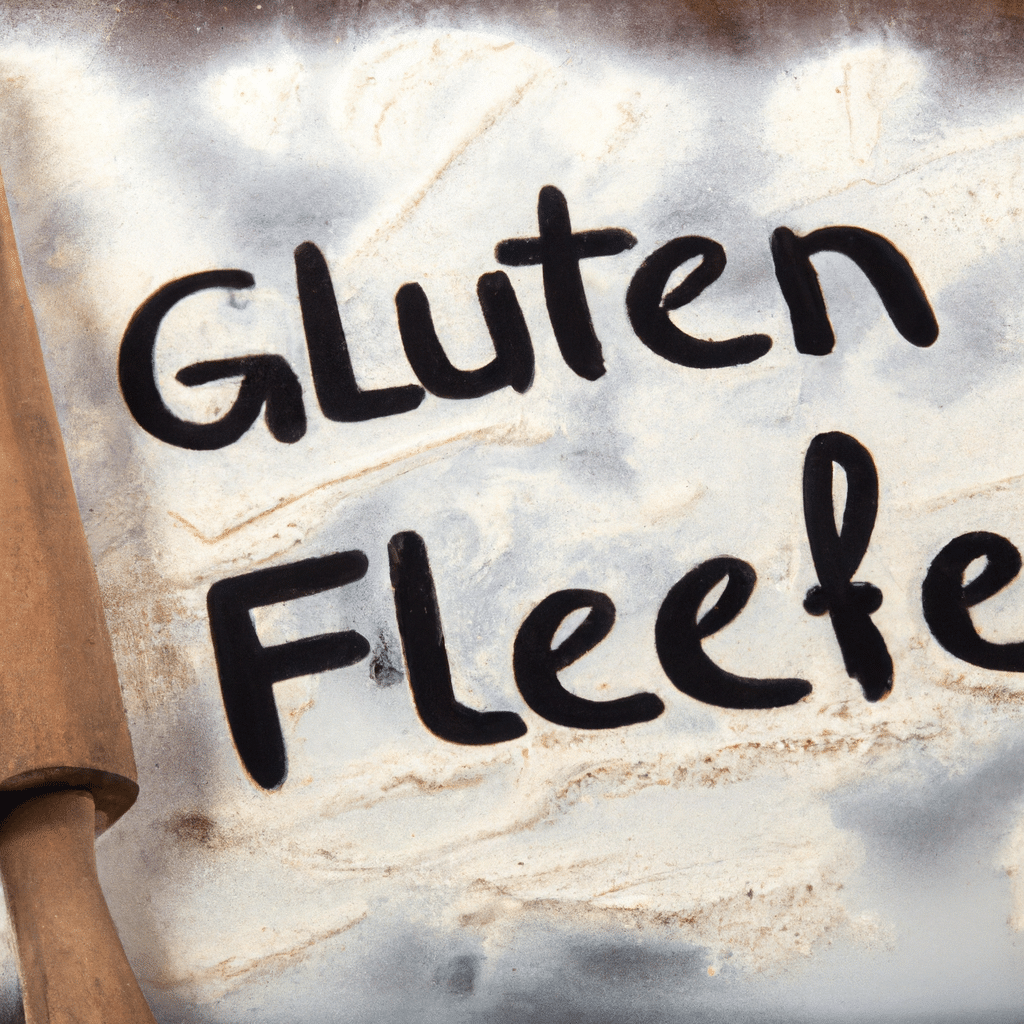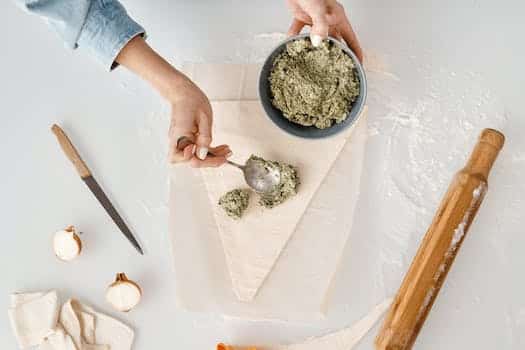Are you on a gluten-free diet and love baking? Look no further! In this ultimate guide, we will explore the best gluten-free baking recipes that will satisfy your cravings and ensure a delicious treat every time. Whether you’re a beginner or a seasoned baker, these recipes are sure to impress. Get ready to indulge in gluten-free goodness!
- 1. Introduction
- 1.1. What is gluten-free baking?
- 1.2. Why choose gluten-free baking recipes?
- 1.3. Benefits of gluten-free baking
- 2. Flour alternatives for gluten-free baking
- 2.1. Almond flour
- 2.2. Coconut flour
- 2.3. Oat flour
- 2.4. Rice flour
- 2.5. Quinoa flour
- 3. Delicious gluten-free baking recipes
- 3.1. Gluten-free chocolate chip cookies
- 3.2. Blueberry almond muffins
- 3.3. Banana oat pancakes
- 3.4. Zucchini bread
- 3.5. Lemon poppy seed cake
1. Introduction
Gluten-free baking has become increasingly popular in recent years, as more and more people are adopting a gluten-free lifestyle. Whether you have a gluten intolerance, celiac disease, or simply choose to avoid gluten for health reasons, this ultimate guide to the best gluten-free baking recipes is here to help you create delicious treats without compromising on taste or texture. In this comprehensive guide, we will explore a variety of gluten-free ingredients, essential baking techniques, and provide a collection of tried and tested recipes that are sure to satisfy your cravings. So, get ready to embark on a gluten-free baking adventure and discover a whole new world of flavors and possibilities!
1.1. What is gluten-free baking?
Gluten-free baking refers to the process of creating baked goods without using gluten-containing ingredients. Gluten is a protein found in wheat, barley, and rye, which gives dough its elasticity and helps it to rise. However, individuals with gluten intolerance or celiac disease need to avoid consuming gluten as it can cause digestive issues and damage to the small intestine. Gluten-free baking involves using alternative flours such as rice flour, almond flour, or tapioca flour, along with other gluten-free ingredients like xanthan gum or guar gum to mimic the texture and structure of traditional baked goods. It requires careful measurement and experimentation to achieve the right balance of ingredients and ensure that the final product is both delicious and gluten-free. In recent years, gluten-free baking has gained popularity as more people are adopting gluten-free diets for various health reasons or personal preferences. In this guide, we will explore some of the best gluten-free baking recipes that can satisfy your cravings without compromising on taste or texture.
1.2. Why choose gluten-free baking recipes?
Gluten-free baking has gained immense popularity in recent years, and for good reason. More and more people are realizing the benefits of eliminating gluten from their diets, whether due to gluten intolerance, celiac disease, or simply a personal preference. This has led to a surge in demand for gluten-free baking recipes that are not only delicious but also easy to make.
So, why should you choose gluten-free baking recipes? Firstly, it allows individuals with gluten sensitivities to enjoy baked goods without experiencing any negative health effects. Gluten is a protein found in wheat, barley, and rye, which can cause digestive issues, inflammation, and other uncomfortable symptoms in those who are intolerant to it.
Secondly, gluten-free baking opens up a whole new world of flavors and ingredients. With traditional baking recipes, wheat flour is the go-to choice, but gluten-free recipes often utilize a variety of alternative flours such as almond flour, rice flour, or tapioca flour. These alternative flours not only provide unique flavors but also offer a different nutritional profile.
Lastly, gluten-free baking can be a fun and creative challenge. It encourages bakers to think outside the box and experiment with different ingredients and techniques. From gluten-free bread to cookies, cakes, and pastries, there are endless possibilities to explore in the realm of gluten-free baking.
In this ultimate guide to the best gluten-free baking recipes, we will dive into the world of gluten-free baking and provide you with a curated collection of tried and tested recipes. Whether you’re a seasoned gluten-free baker or just starting out, this guide is designed to help you create delicious gluten-free treats that will satisfy your cravings and impress your friends and family.
1.3. Benefits of gluten-free baking
Gluten-free baking has gained immense popularity in recent years, and for good reason. It not only caters to individuals with gluten intolerance or celiac disease but also offers a range of benefits for everyone. This section will explore the various advantages of gluten-free baking and why it is worth considering for your baking endeavors. From improved digestion to increased energy levels, gluten-free baking can have a positive impact on your overall well-being. So, let’s delve into the numerous benefits of embracing gluten-free recipes for your baking needs.
2. Flour alternatives for gluten-free baking
When it comes to gluten-free baking, finding the right flour alternatives is key. Fortunately, there are plenty of options available for those who can’t consume gluten. These alternatives not only provide a suitable replacement for traditional wheat flour but also offer unique flavors and textures to your baked goods. Here are some top flour alternatives for gluten-free baking:
1. Almond Flour: Made from finely ground almonds, almond flour adds a nutty flavor and moist texture to your gluten-free recipes. It works well in cookies, cakes, and quick breads.
2. Coconut Flour: Derived from dried coconut meat, coconut flour is high in fiber and imparts a subtle coconut taste. It is best used in combination with other flours due to its absorbent nature.
3. Rice Flour: Made from finely milled rice, rice flour is a versatile gluten-free option. It can be used as a standalone flour or combined with other flours to improve texture and structure in baked goods.
4. Buckwheat Flour: Despite its name, buckwheat is not related to wheat and is naturally gluten-free. Buckwheat flour has a rich, nutty flavor and is ideal for pancakes, waffles, and muffins.
5. Quinoa Flour: Ground from quinoa seeds, quinoa flour offers a protein-packed alternative to traditional flours. It has a slightly earthy taste and works well in cakes, cookies, and breads.
6. Tapioca Flour: Also known as tapioca starch, this flour comes from the cassava root. It adds chewiness and elasticity to gluten-free baked goods and can be used in combination with other flours.
7. Sorghum Flour: Made from a cereal grain called sorghum, this flour has a mild taste and can be used as a substitute for wheat flour in various recipes. It works well in bread, pizza dough, and muffins.
These flour alternatives provide a wide range of options for gluten-free baking. Experiment with different combinations to find the perfect mix for your favorite recipes!
2.1. Almond flour
Almond flour is a popular choice for those following a gluten-free diet. Made from finely ground almonds, it is a versatile and nutritious alternative to traditional wheat flour. Not only does almond flour add a subtle nutty flavor to baked goods, but it also provides a moist and tender texture. Additionally, almond flour is rich in healthy fats, protein, and fiber, making it an excellent choice for those looking to incorporate more nutrients into their gluten-free baking. When using almond flour in recipes, it is important to note that it does not have the same binding properties as wheat flour, so it is often recommended to combine it with other gluten-free flours or use additional binding agents such as eggs or xanthan gum. Overall, almond flour is a fantastic option for creating delicious and wholesome gluten-free baked goods.
2.2. Coconut flour
Coconut flour is a versatile and popular choice for those following a gluten-free diet. Made from dried coconut meat, it is a great alternative to traditional wheat flour. Not only is coconut flour naturally gluten-free, but it also offers a unique flavor and texture to baked goods.
One of the main benefits of using coconut flour is its high fiber content. It contains significantly more fiber than other grain-based flours, which can help support digestive health and promote feelings of fullness. Additionally, coconut flour is low in carbohydrates and has a lower glycemic index, making it a suitable choice for those watching their blood sugar levels.
When using coconut flour in gluten-free baking, it is important to note that it absorbs liquid differently than other flours. Due to its high fiber content, coconut flour tends to absorb more liquid, resulting in a denser and moister texture. It is advisable to use more liquids, such as eggs or milk, when incorporating coconut flour into recipes.
Moreover, coconut flour is rich in protein, healthy fats, and various essential nutrients. It provides a good source of iron, magnesium, and potassium, which are beneficial for overall well-being. Additionally, coconut flour is naturally gluten-free, making it a suitable choice for those with celiac disease or gluten sensitivities.
In conclusion, coconut flour is an excellent flour alternative for gluten-free baking. Its unique flavor, high fiber content, and nutritional profile make it a desirable choice for individuals looking to create delicious and wholesome gluten-free baked goods.
2.3. Oat flour
Oat flour is a versatile and nutritious alternative to traditional wheat flour for those following a gluten-free diet. Made from ground oats, oat flour adds a unique flavor and texture to baked goods. It is a great option for people with gluten sensitivities or celiac disease who still want to enjoy their favorite baked treats.
One of the benefits of using oat flour is its high fiber content. Oats are naturally high in fiber, which can help regulate blood sugar levels, improve digestion, and promote a feeling of fullness. This makes oat flour a healthier choice compared to refined wheat flour.
In addition to being gluten-free and high in fiber, oat flour is also rich in vitamins and minerals. It contains important nutrients like iron, magnesium, and B vitamins. These nutrients are essential for maintaining good overall health.
When using oat flour in gluten-free baking, it is important to note that it has a different texture and absorbency compared to wheat flour. Oat flour tends to be more dense and can make baked goods slightly heavier. However, this can be easily remedied by combining oat flour with other gluten-free flours or using additional leavening agents.
Overall, oat flour is a fantastic alternative for gluten-free baking. Its nutritional benefits, unique flavor, and versatility make it a great choice for creating delicious and healthy gluten-free baked goods.
2.4. Rice flour
Rice flour is a versatile and popular alternative for gluten-free baking. It is made from finely milled rice grains and has a light, powdery texture. Rice flour is a great option for those who need to avoid gluten as it is naturally gluten-free. It can be used in a variety of baking recipes, including bread, cakes, cookies, and pastries.
One of the advantages of using rice flour is its neutral flavor, which allows it to blend well with other ingredients. It provides a slightly sweet taste and adds a soft and tender texture to baked goods. Rice flour also has a high starch content, which helps to bind the ingredients together and create a desirable consistency in the final product.
When using rice flour for gluten-free baking, it is important to note that it does not have the same elasticity as wheat flour. Therefore, it may be necessary to combine it with other gluten-free flours or use a binding agent such as xanthan gum or guar gum to improve the texture and structure of the baked goods.
Overall, rice flour is an excellent flour alternative for gluten-free baking. Its versatility, neutral flavor, and binding properties make it a go-to choice for creating delicious gluten-free treats.
2.5. Quinoa flour
Quinoa flour is an excellent alternative for gluten-free baking. Made from ground quinoa seeds, this flour is not only gluten-free but also packed with nutrients. Quinoa flour has a slightly nutty flavor that adds a unique taste to baked goods.
One of the main advantages of using quinoa flour is its high protein content. It contains all the essential amino acids, making it a complete protein source. This makes quinoa flour a great choice for those following a gluten-free and vegan diet.
In addition to being high in protein, quinoa flour is also rich in fiber, vitamins, and minerals. It provides a good amount of iron, magnesium, and phosphorus, which are essential for maintaining overall health.
When using quinoa flour in gluten-free baking, it is important to note that it has a different texture compared to traditional wheat flour. Quinoa flour tends to be denser and may result in heavier baked goods. To achieve a lighter texture, it is often recommended to combine quinoa flour with other gluten-free flours or starches.
Overall, quinoa flour is a versatile and nutritious option for those looking to bake gluten-free. Experiment with different recipes and combinations to find the perfect balance of flavors and textures.
3. Delicious gluten-free baking recipes
Whether you have a gluten intolerance or simply prefer to avoid gluten, these delicious gluten-free baking recipes are sure to satisfy your sweet tooth. From fluffy cakes to chewy cookies, there’s something for everyone in this ultimate guide to gluten-free baking. Get ready to indulge in the world of gluten-free desserts and impress your friends and family with your baking skills!
3.2. Blueberry almond muffins
Blueberry almond muffins are a delightful gluten-free baking recipe that is sure to please. Made with almond flour, these muffins have a tender texture and a nutty flavor that pairs perfectly with the burst of sweetness from the blueberries. The combination of the two ingredients creates a mouthwatering treat that is hard to resist.
To make these muffins, you’ll need almond flour, baking powder, salt, eggs, honey, almond milk, vanilla extract, and, of course, fresh blueberries. The almond flour adds a richness to the muffins while keeping them gluten-free. The baking powder helps them rise and gives them a light and fluffy texture.
Start by preheating your oven to 350 degrees Fahrenheit. In a large mixing bowl, whisk together the almond flour, baking powder, and salt. In a separate bowl, beat the eggs and then add in the honey, almond milk, and vanilla extract. Pour the wet ingredients into the dry ingredients and stir until well combined.
Gently fold in the blueberries, being careful not to overmix the batter. Spoon the batter into a lined muffin tin, filling each cup about three-quarters full. Bake for about 20-25 minutes or until the muffins are golden brown and a toothpick inserted into the center comes out clean.
Once baked, allow the muffins to cool for a few minutes in the tin before transferring them to a wire rack to cool completely. These blueberry almond muffins are best enjoyed fresh and warm, but they can also be stored in an airtight container for a few days.
Whether you follow a gluten-free diet or not, these blueberry almond muffins are a must-try. They are packed with flavor, easy to make, and perfect for breakfast, brunch, or a sweet snack. So, grab your ingredients and get ready to indulge in these delicious gluten-free treats!
3.3. Banana oat pancakes
Banana oat pancakes are a delicious and healthy gluten-free option for breakfast. Made with ripe bananas and gluten-free oats, these pancakes are not only packed with flavor but also provide a good source of fiber. They are easy to make and can be customized with toppings such as fresh fruits, nuts, or a drizzle of maple syrup. Whether you have a gluten intolerance or simply prefer gluten-free recipes, these banana oat pancakes are a must-try. They are a great way to start your day on a nutritious and tasty note.
3.4. Zucchini bread
Zucchini bread is a delicious and moist gluten-free baking recipe that is perfect for those with dietary restrictions. Made with grated zucchini, this bread is not only healthy but also incredibly flavorful. The combination of zucchini, gluten-free flour, and other key ingredients creates a moist and tender texture that is hard to resist. Whether you have a gluten intolerance or simply want to explore gluten-free baking, zucchini bread is a must-try recipe. It can be enjoyed as a snack, dessert, or even as a breakfast option. With its irresistible taste and the added bonus of hidden veggies, zucchini bread is sure to become a favorite in your gluten-free baking repertoire.
3.5. Lemon poppy seed cake
Lemon poppy seed cake is a delightful gluten-free dessert that is sure to please any palate. The combination of tangy lemon and the subtle crunch of poppy seeds creates a unique and refreshing flavor. This cake is moist, fluffy, and packed with zesty goodness. It is perfect for those who are gluten intolerant or simply looking for a delicious gluten-free treat. Whether you’re hosting a special occasion or simply craving a slice of something sweet, this lemon poppy seed cake is a must-try recipe.
Conclusion
In conclusion, this ultimate guide provides a wide array of delicious and easy-to-follow gluten-free baking recipes. Whether you have a gluten intolerance or simply prefer to go gluten-free, these recipes will help you create mouthwatering treats that everyone can enjoy. From breads and cakes to cookies and pastries, you’ll find a variety of options to satisfy your cravings. So, get ready to bake your way to gluten-free bliss with these amazing recipes!






2 Comments
Jasmine Joaquin
1 year agoWow, I am absolutely thrilled to have stumbled upon this post! As a normal human visitor with a gluten sensitivity, I cant express how grateful I am for this comprehensive guide. Finally, I can indulge in the joy of baking without worrying about any dietary restrictions. The thought of trying out these delicious gluten-free recipes has my taste buds dancing with excitement. Its time to dust off that apron, preheat the oven, and embark on a baking adventure like never before. Thank you for this incredible resource, and heres to a future filled with scrumptious gluten-free treats!
Editha Wyne
1 year agoWow, this guide seems like a game-changer for us gluten-sensitive folks! Finally, I can indulge in some tasty baking without any worries. Cant wait to get my hands dirty in the kitchen and try out these yummy recipes. Thanks for sharing! #GlutenFreeGoodness